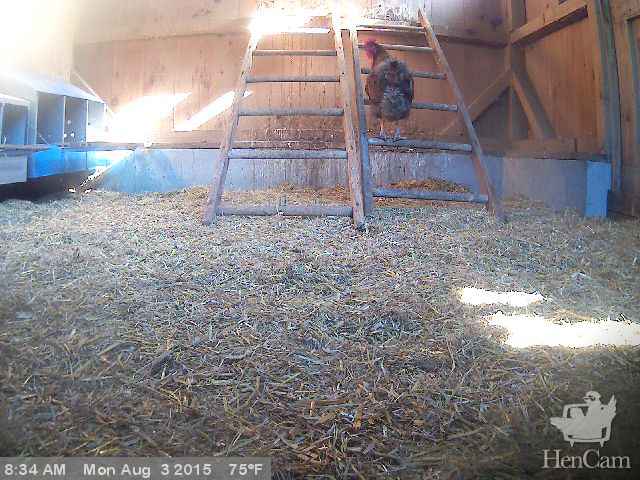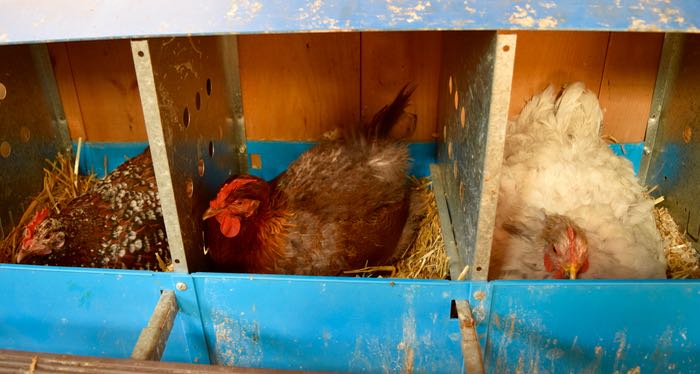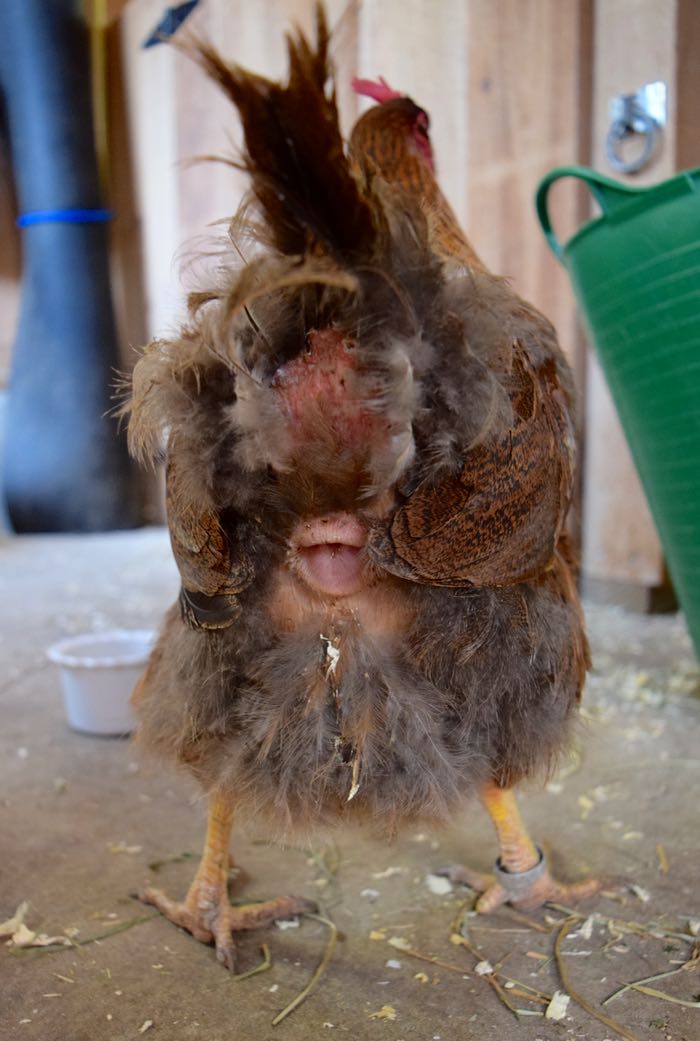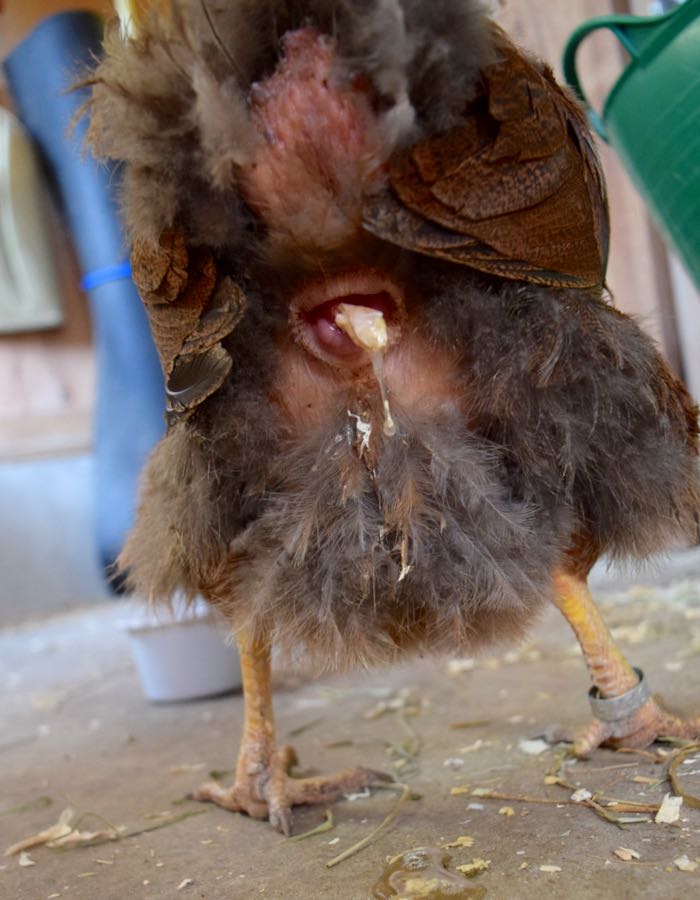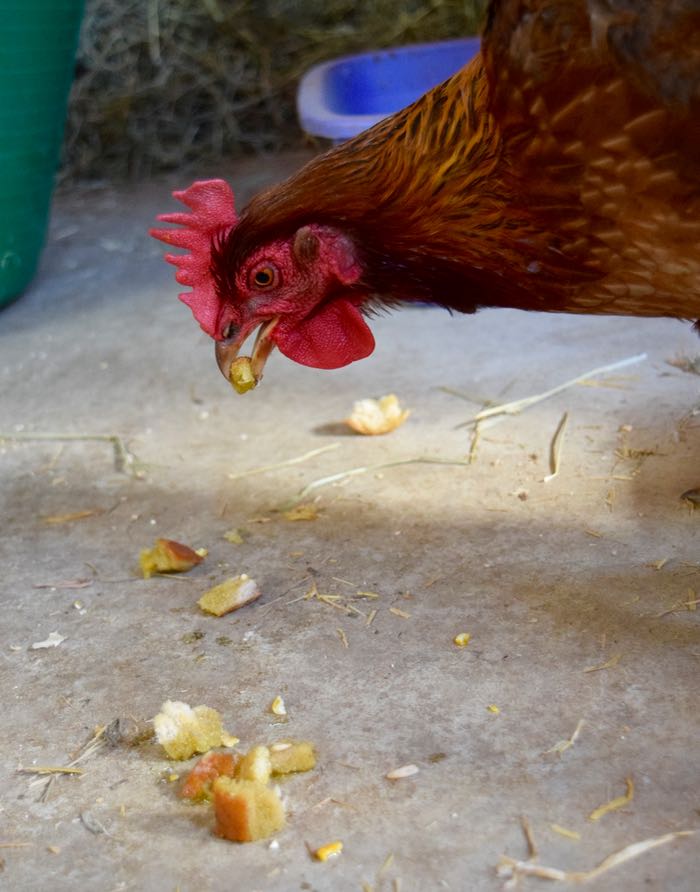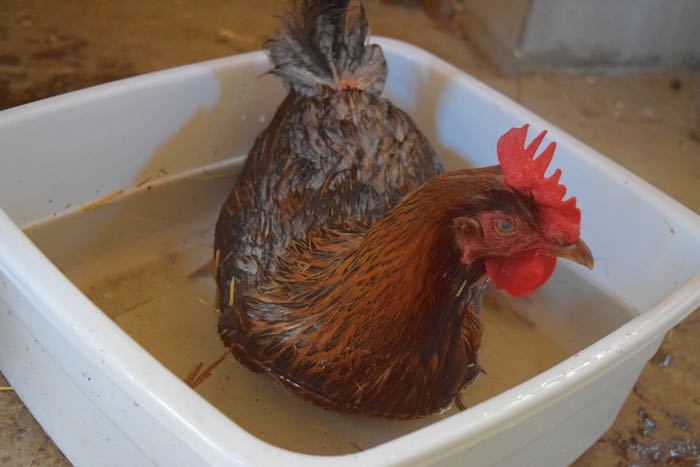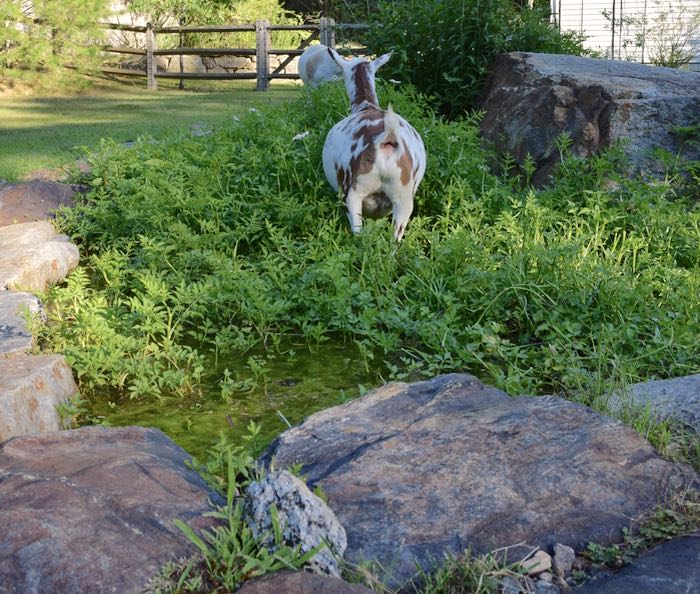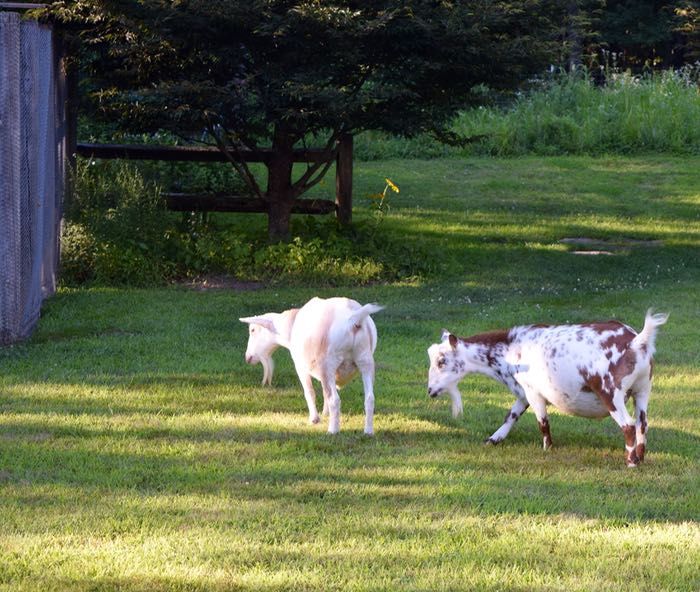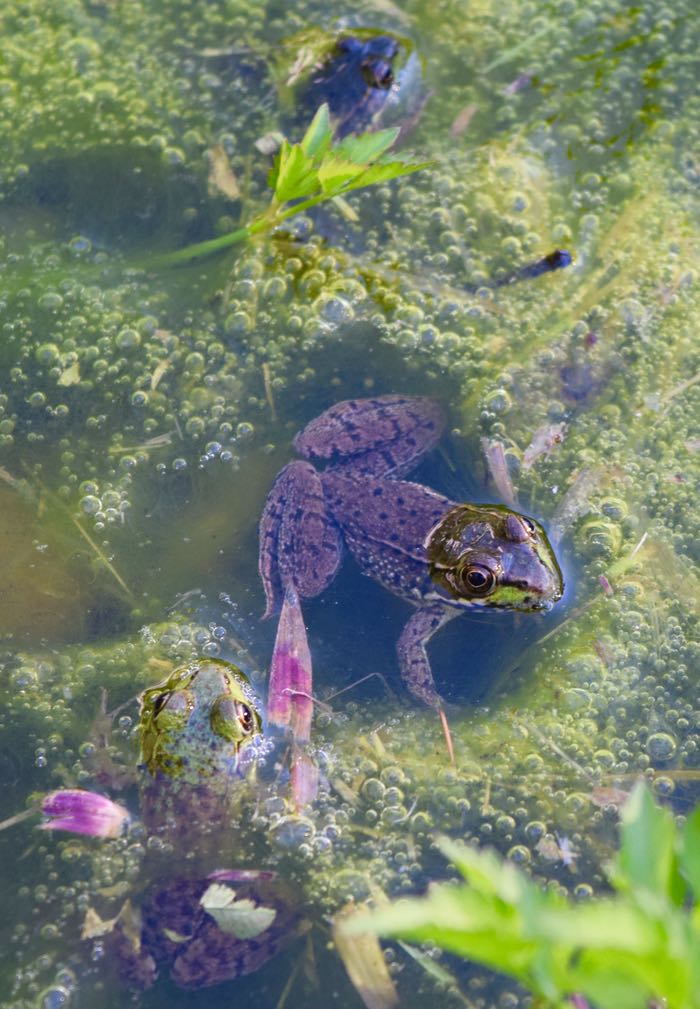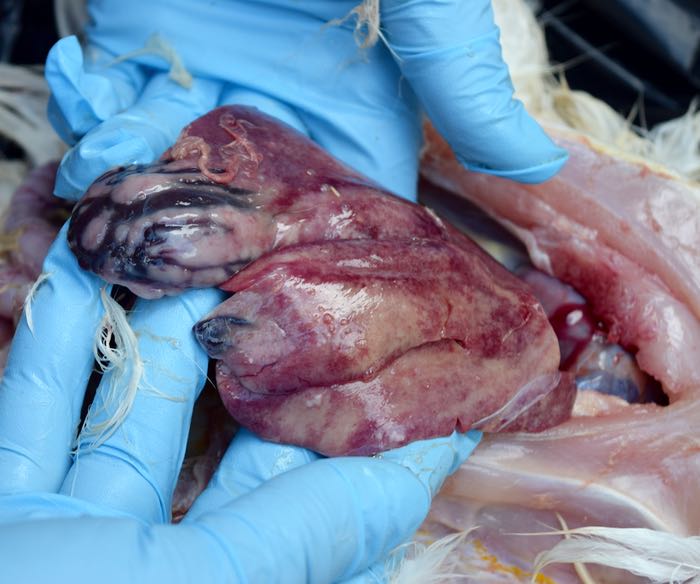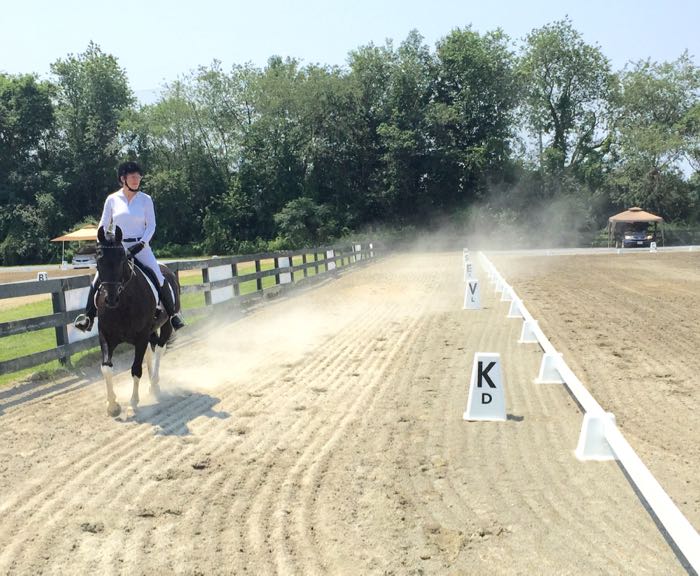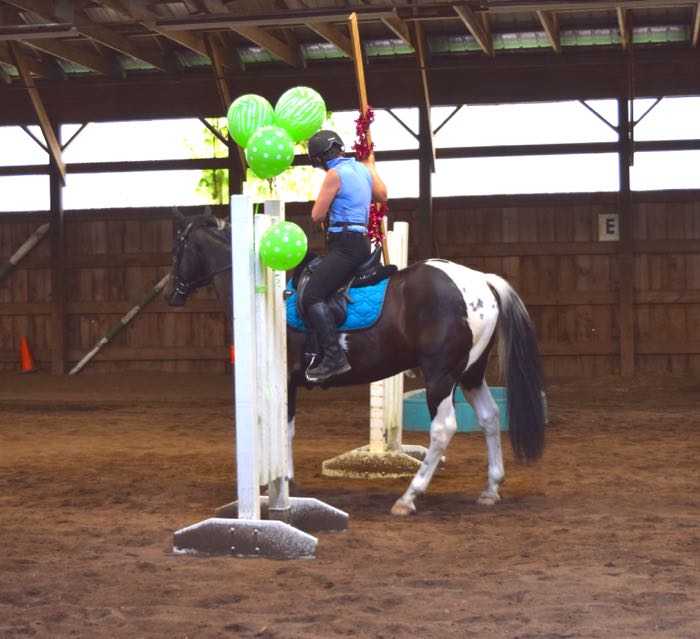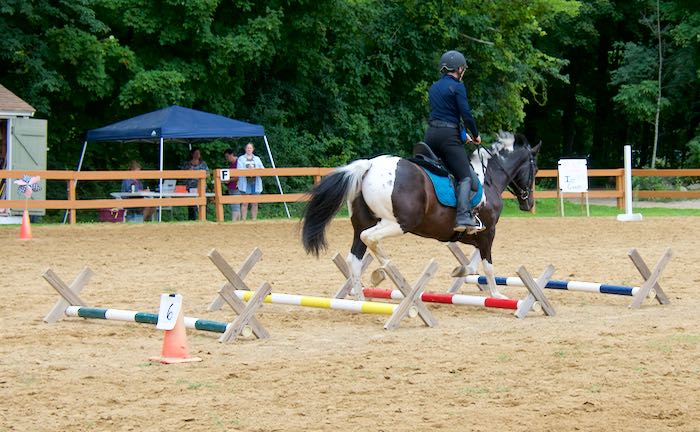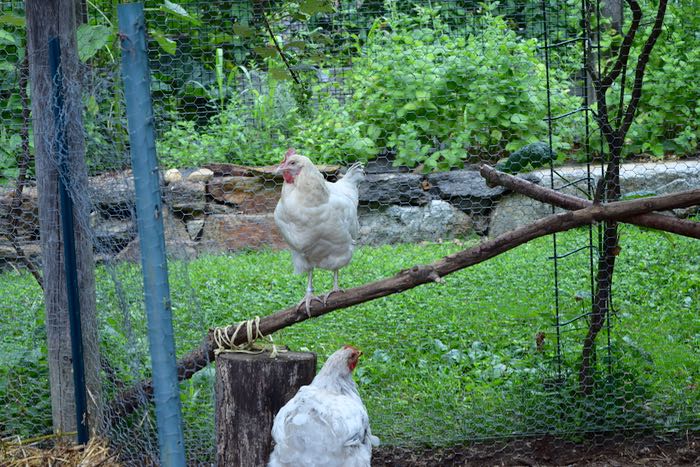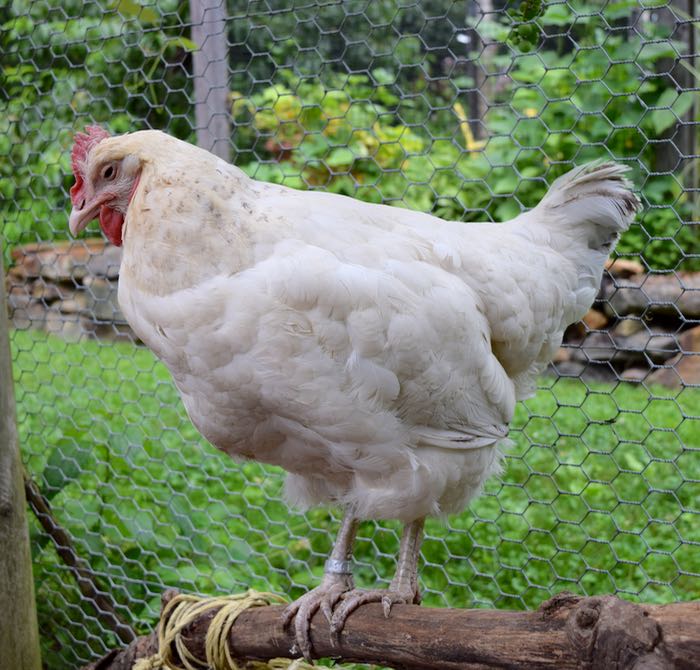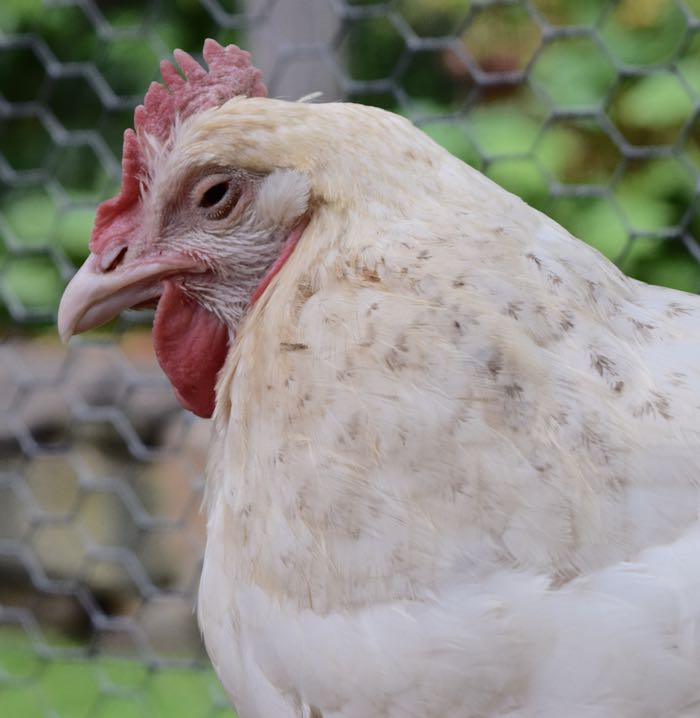Yesterday morning, when the other hens got busy with their days, Jasper stayed on the roost. Something was wrong.
I went outside to check on her. She was in a nesting box between the two broodies.
I set her down in the barn to see what I could see. It was obvious that she was in distress because her vent was distended and pulsing.
I was there at the right time. Jasper pushed out some clear fluid – egg white? Then this got stuck:
I gently helped her by pulling it out. A soft shell. Chickens will eat this, so I was fortunate to see it. It gives me a good clue as to what is wrong with Jasper.
Soft shelled eggs are not easy to lay. Sometimes they break inside of the hen, and even if they don’t, the hen isn’t designed to expel the equivalent of a rough deflated balloon. Sometime the hen can’t push it out, the shell stays inside of her, forms a mass and blocks the tract. In the worst case scenario it becomes infected, the reproductive tract breaks, solidifies around the shell, and then gets pushed out in the form of lash. Meanwhile, yolks continue to form, dropping into the body cavity, and becoming infected. The hen eventually dies.
Jasper is in her fourth year of lay. Egg-making glitches are not a surprise. There’s only so much that I can do. The hens have a good diet, with plenty of calcium for shell production. However, as a hen ages, she sometimes loses the ability to process essential minerals. That might be Jasper’s situation. Of concern to me is that she expelled a white and a shell, but no yolk. Where did that go? Perhaps she’s no longer making yolks, and this egg was the last that she’ll produce and there won’t be any more problems. Or, perhaps that yolk is no longer getting into the reproductive tract, but is dropping into her body cavity. In that case, she’s an internal layer, which will eventually kill her. I just don’t know.
What I do know is that I can give Jasper some relief right now with my Spa Treatment. I want to make sure that her reproductive and digestive tracts are cleared out of any blockages. I fed her some bread soaked in a tablespoon of olive oil. Note that Jasper is alert and hungry. That’s a good sign.
I soaked her in a warm epsom salt bath for 10 minutes. She didn’t like that as much as the bread, but she stayed put.
Then I put her back with her flock. Once she pushed out that soft shell, she was once again her active self. Being separated from her flock would have stressed her. Besides, fresh air and exercise helps to move things along.
Twenty-four hours later, Jasper looked absolutely fine.
Time will tell if this was a one-off problem or a fatal glitch. In the meanwhile, I’m hoping that she’ll stop laying and go into an early molt. Not only does she need a break from laying, but this hen goes up to others and asks them to peck at her feathers! It’s time for her to get a new coat.
